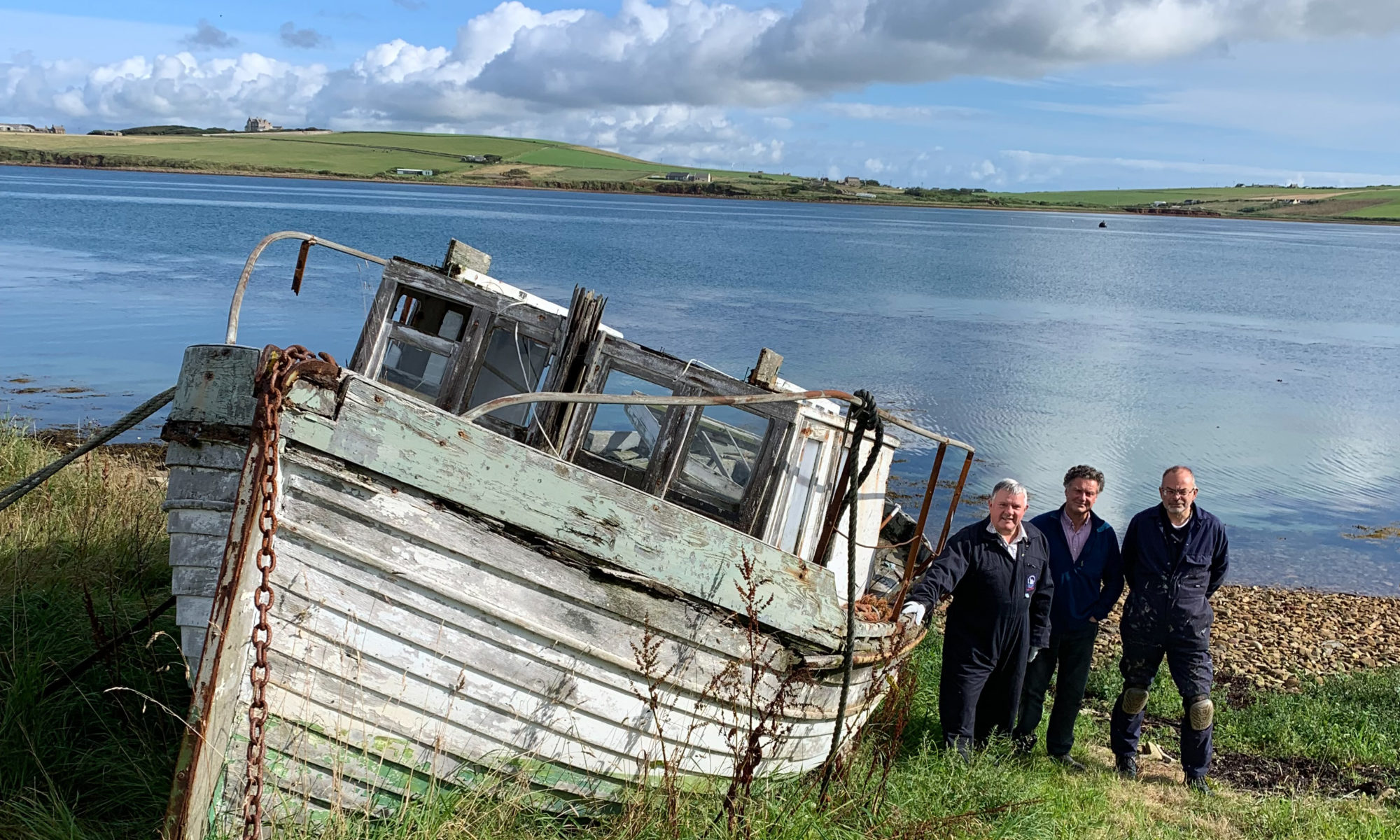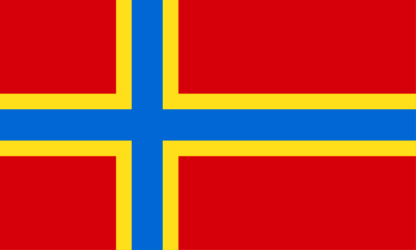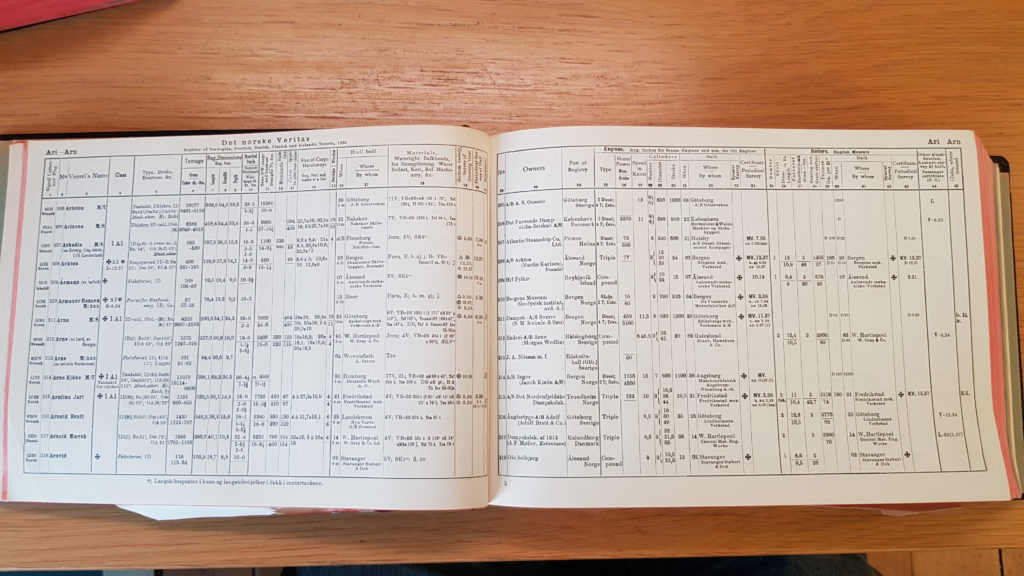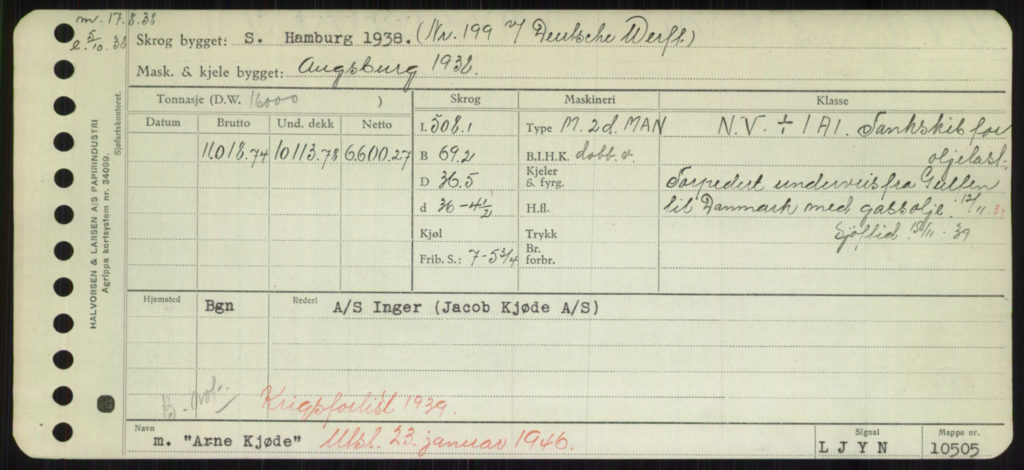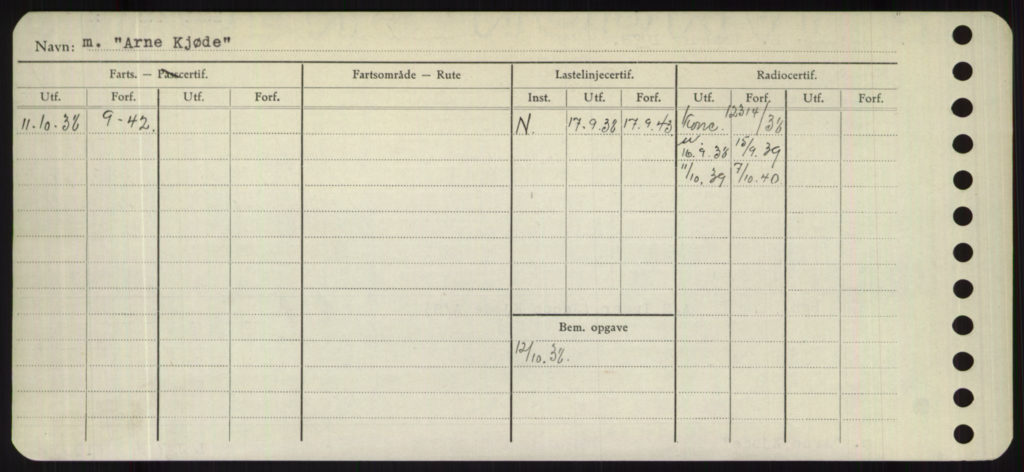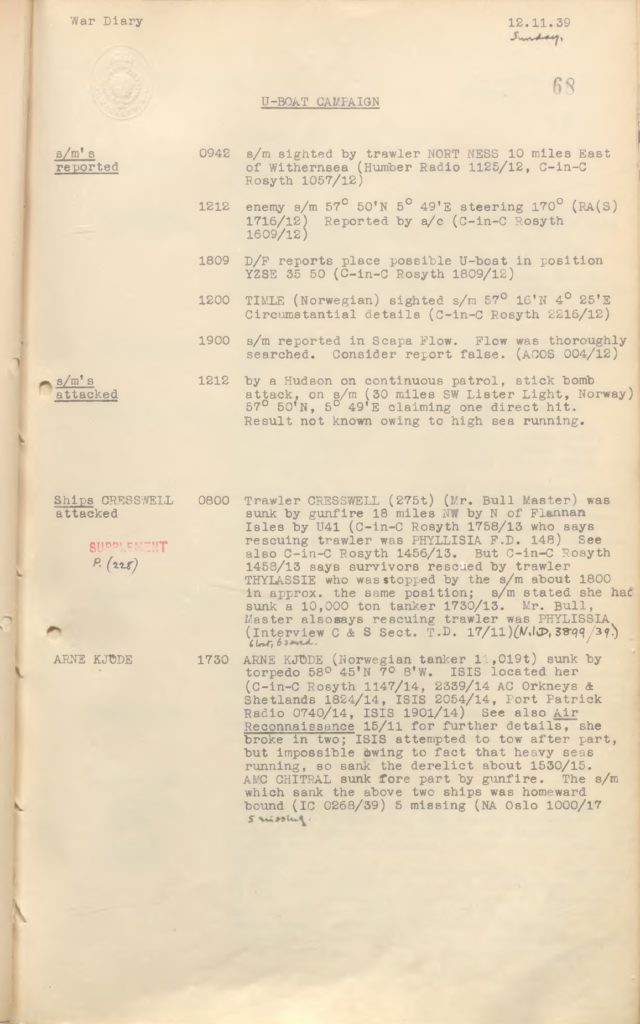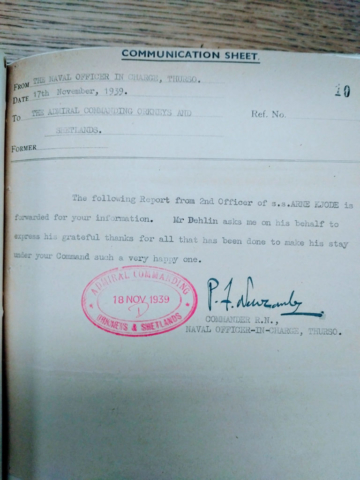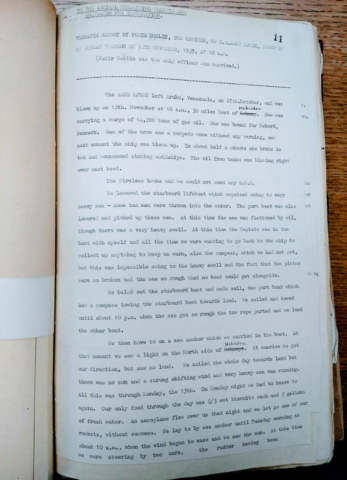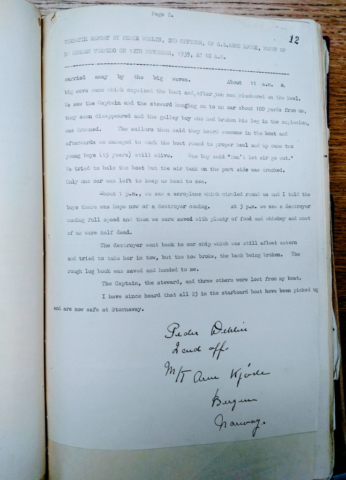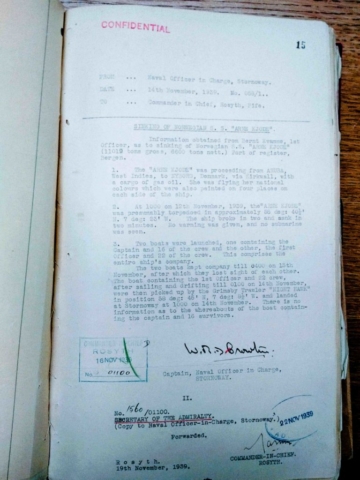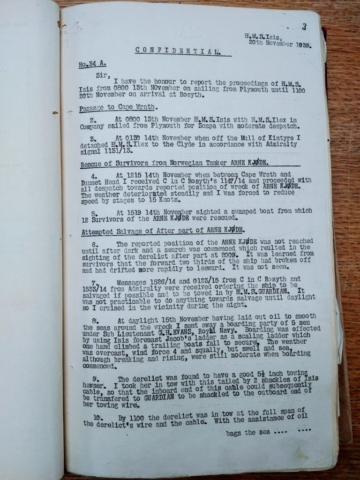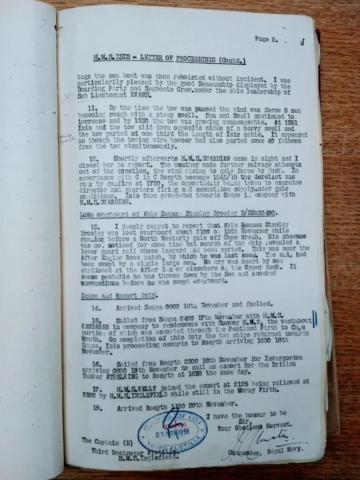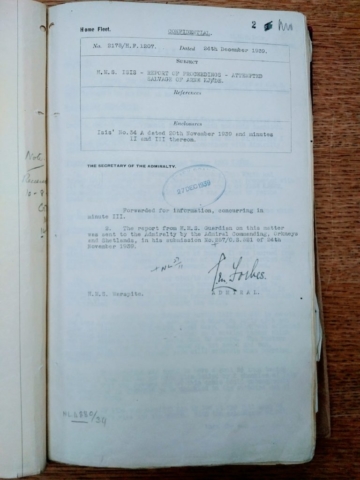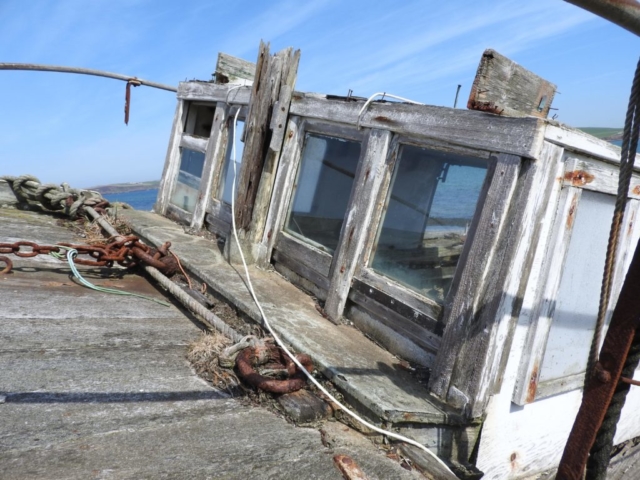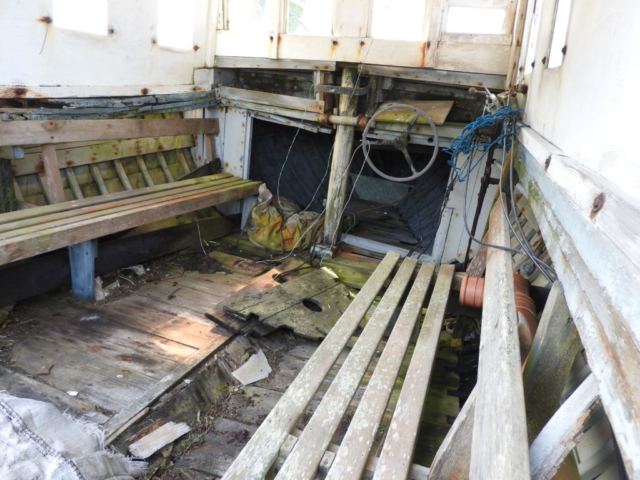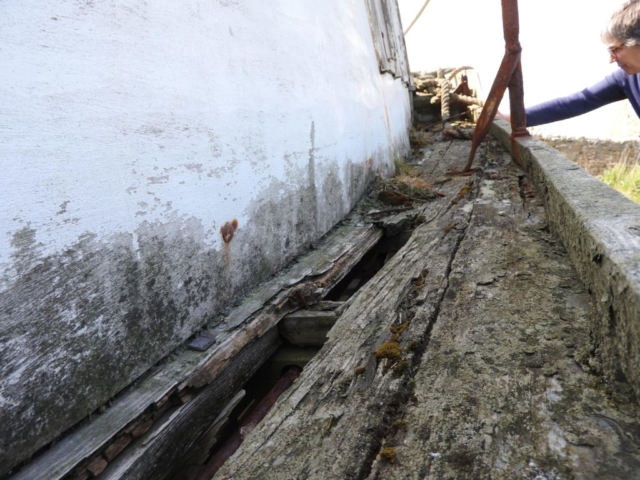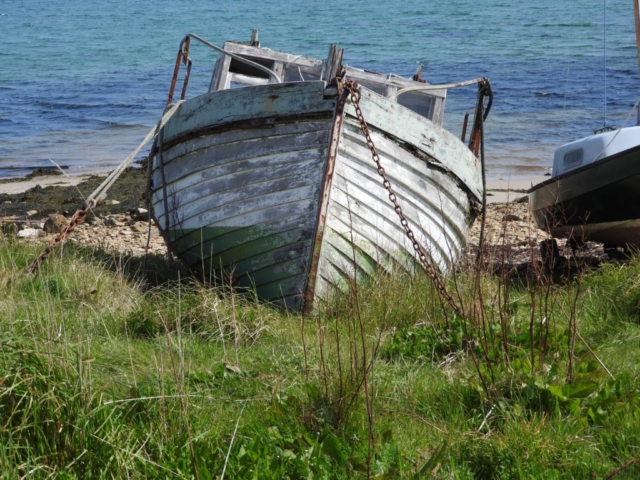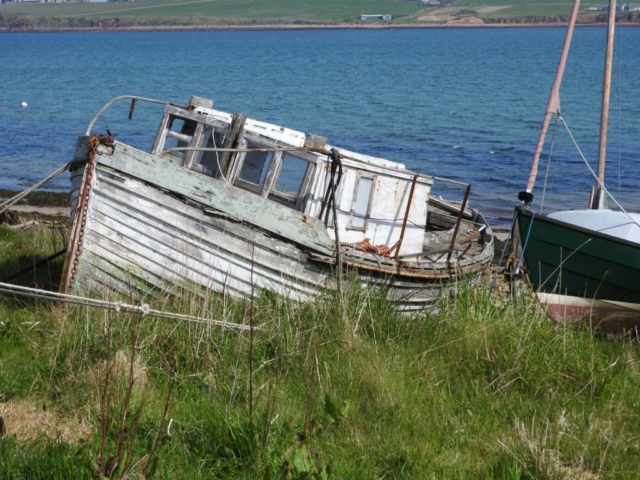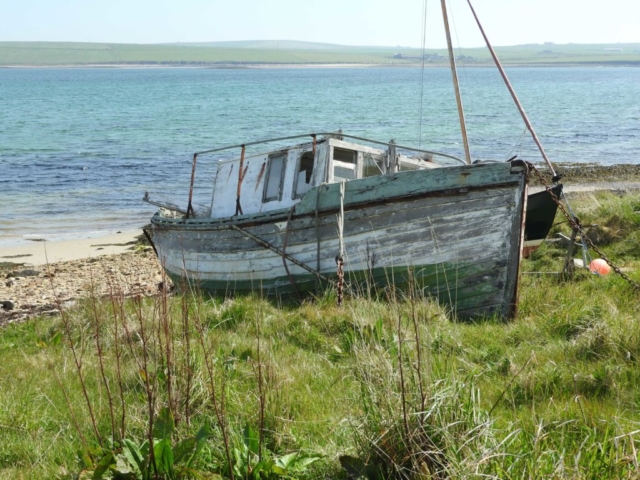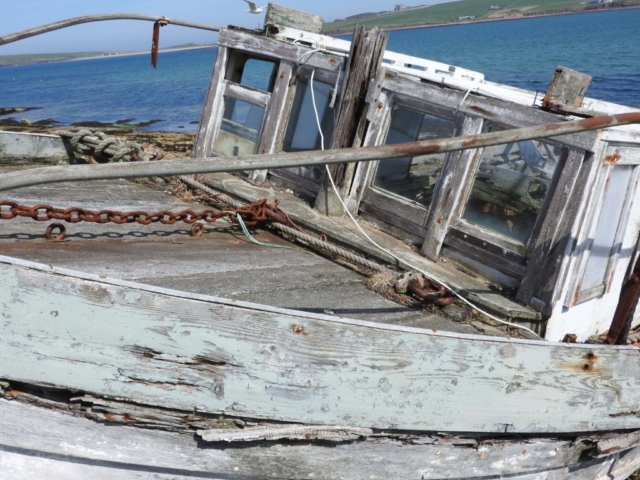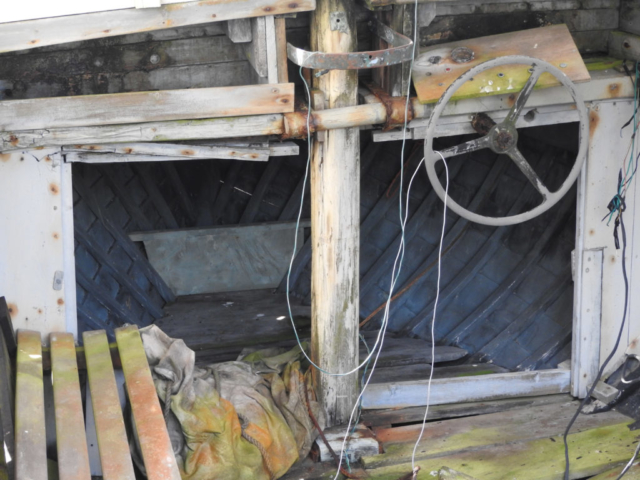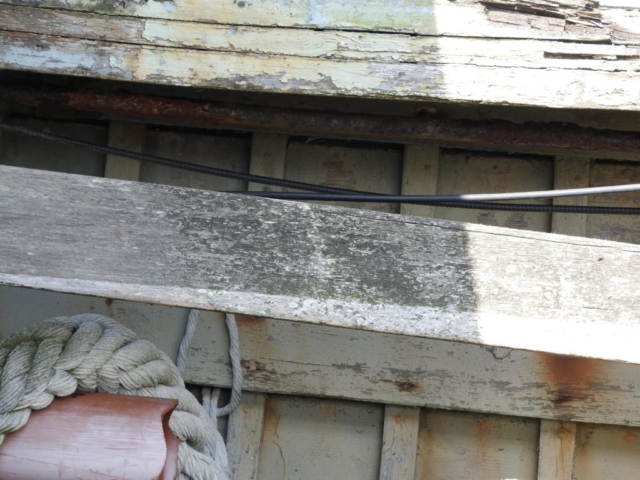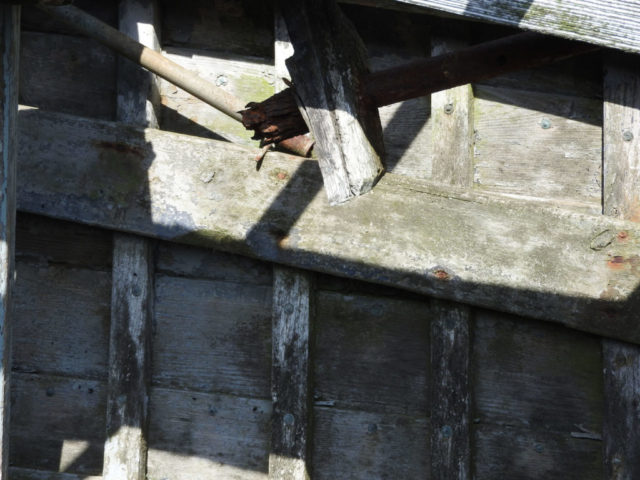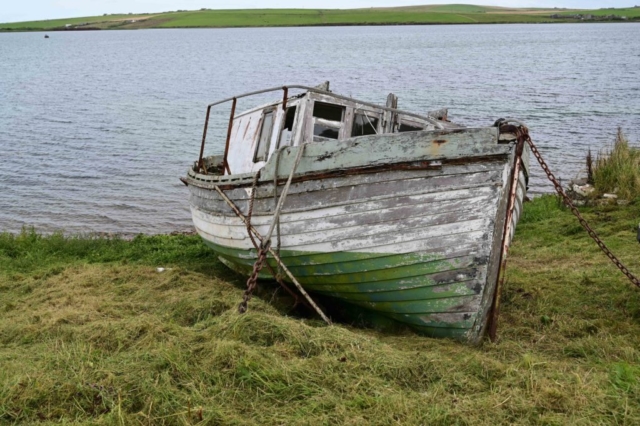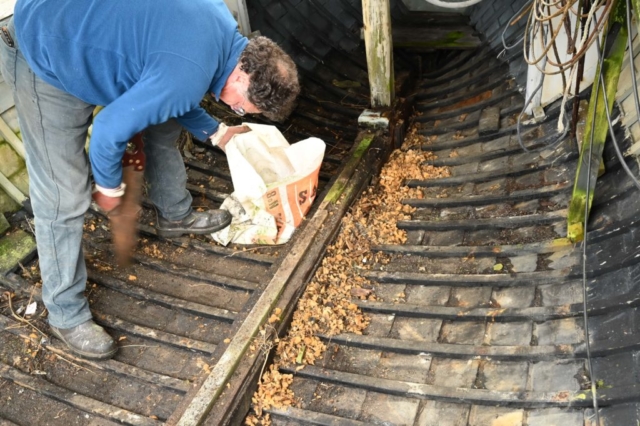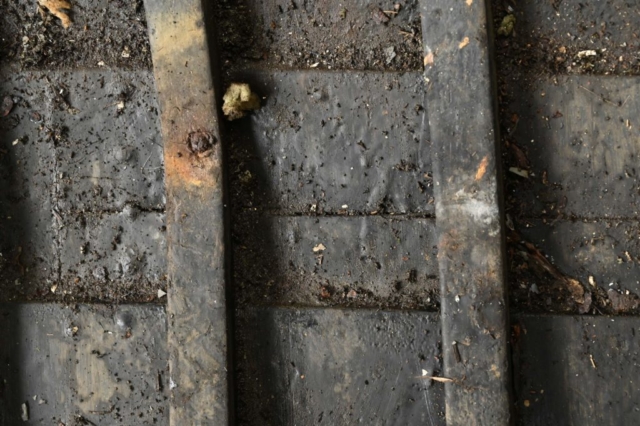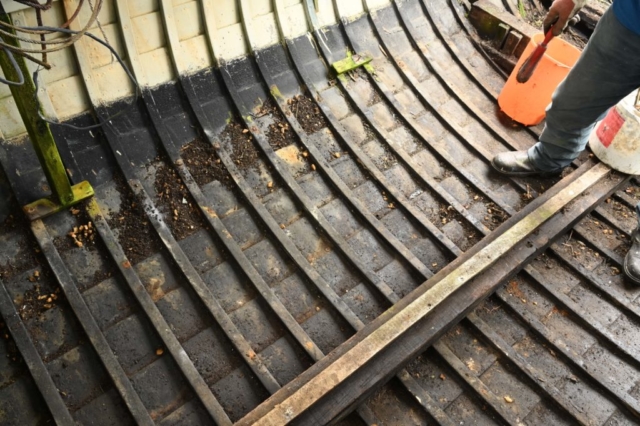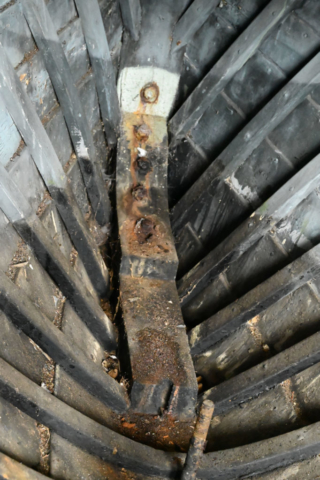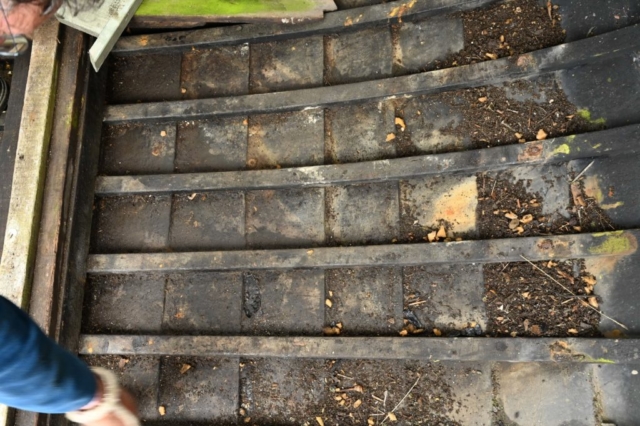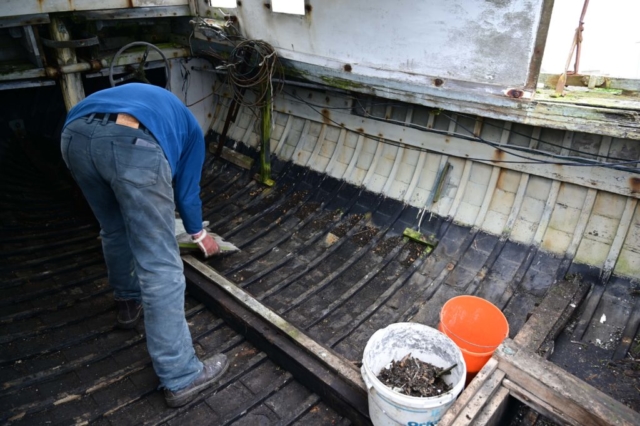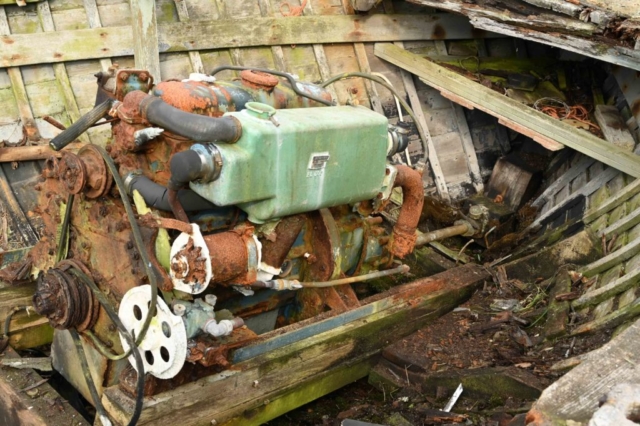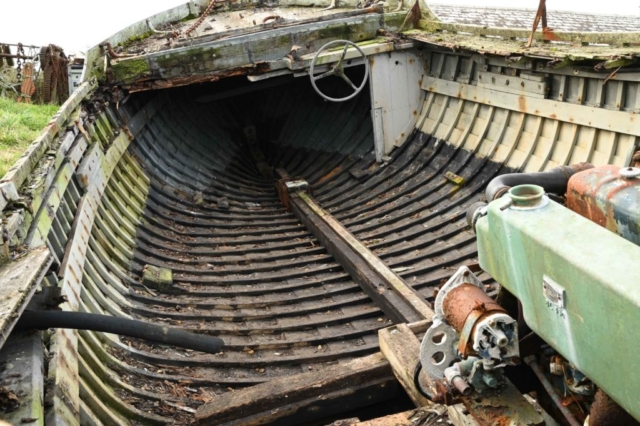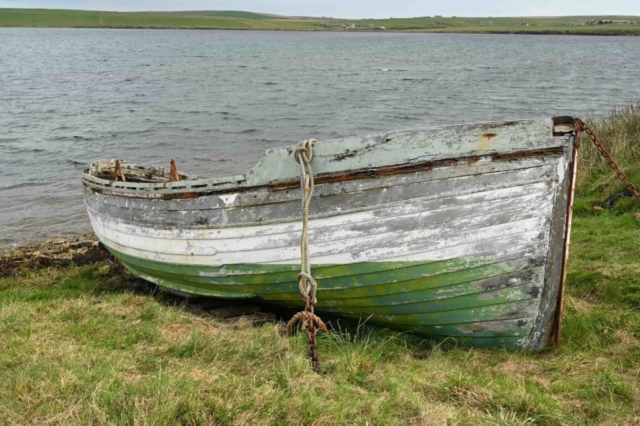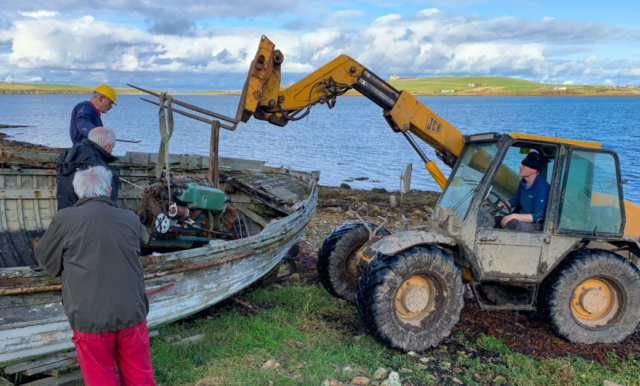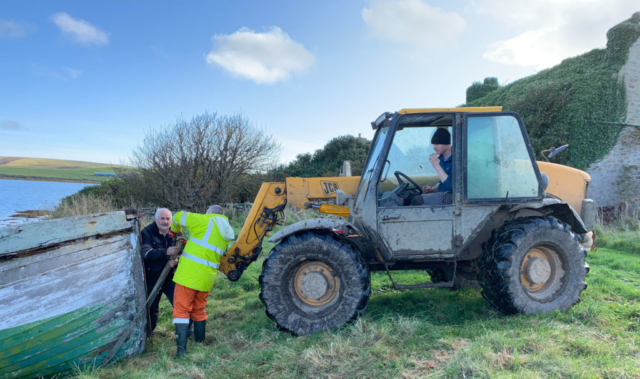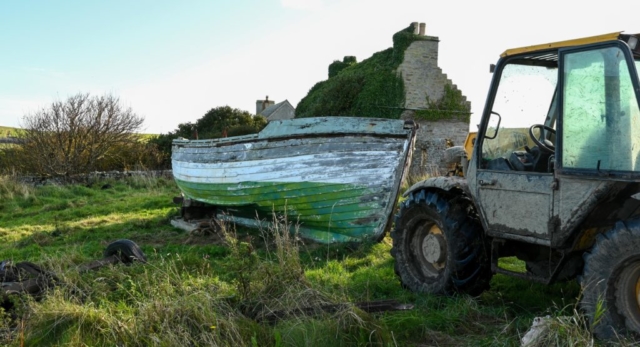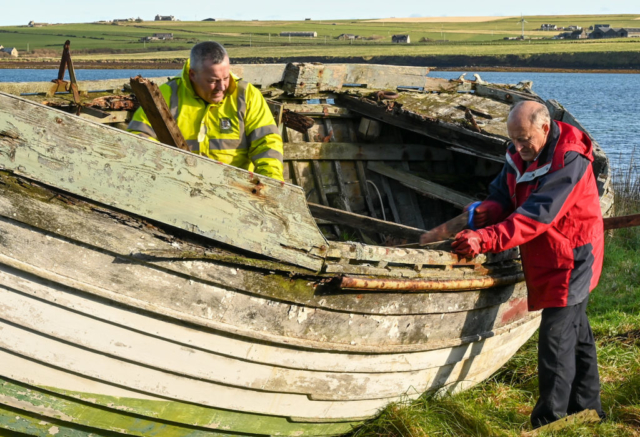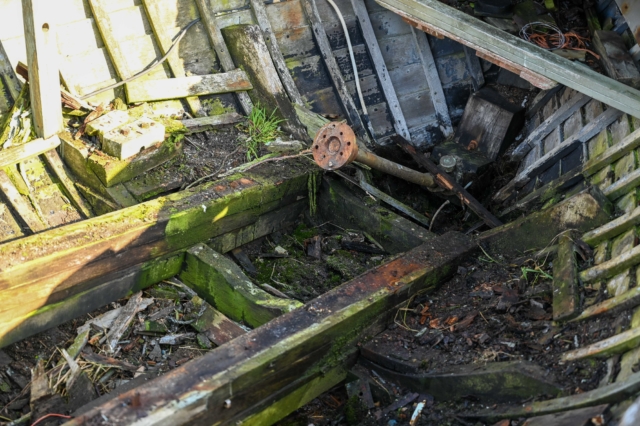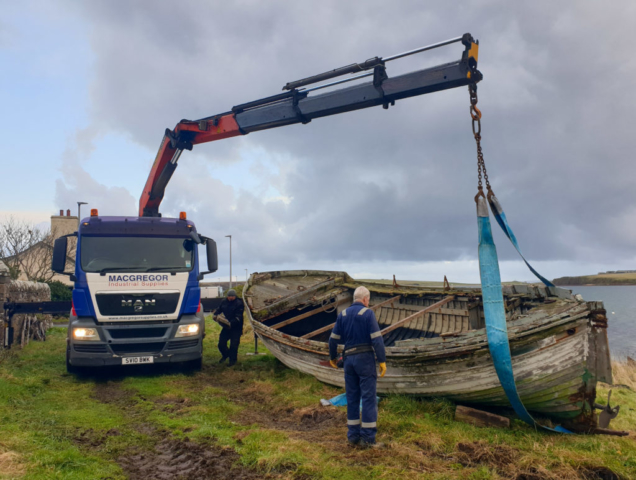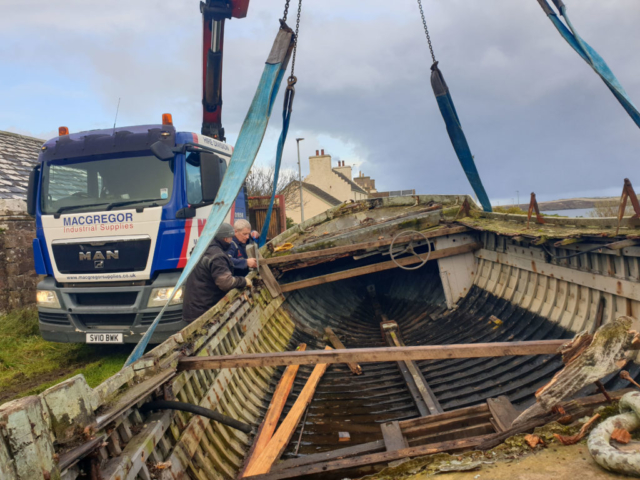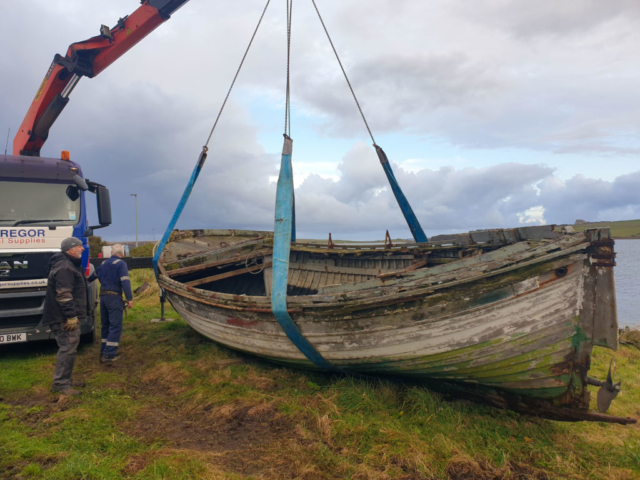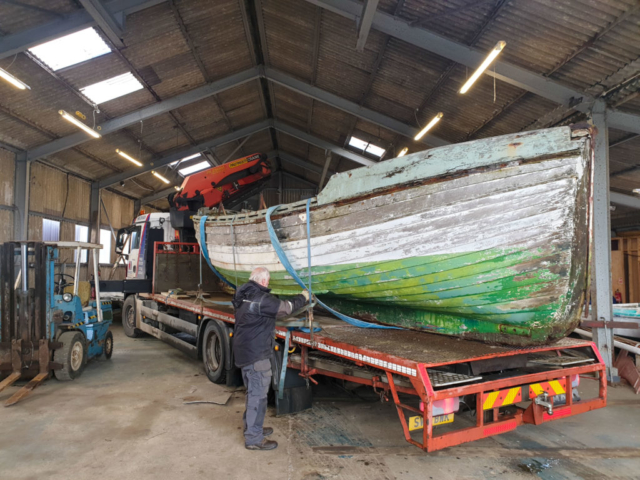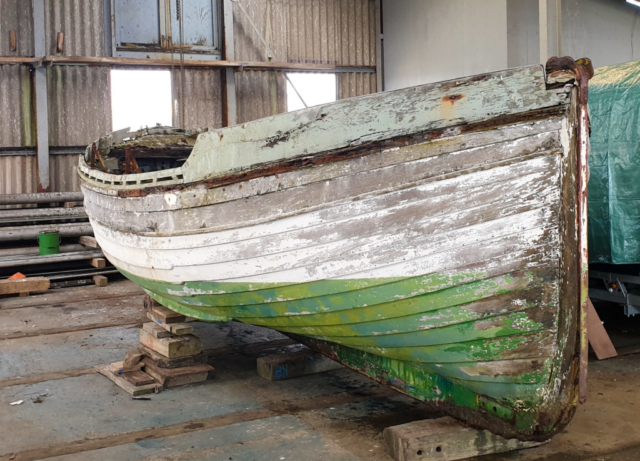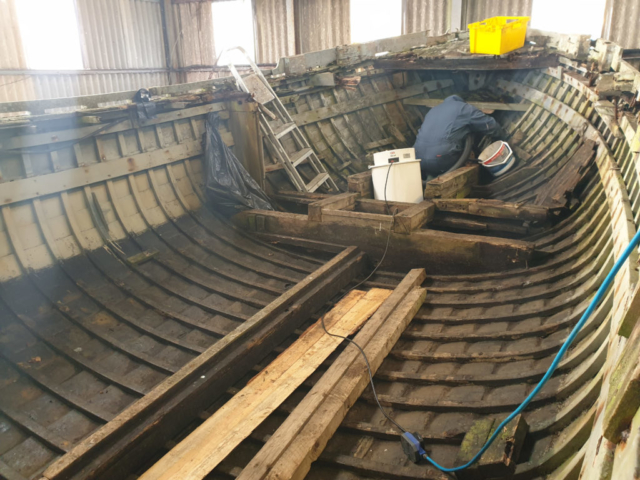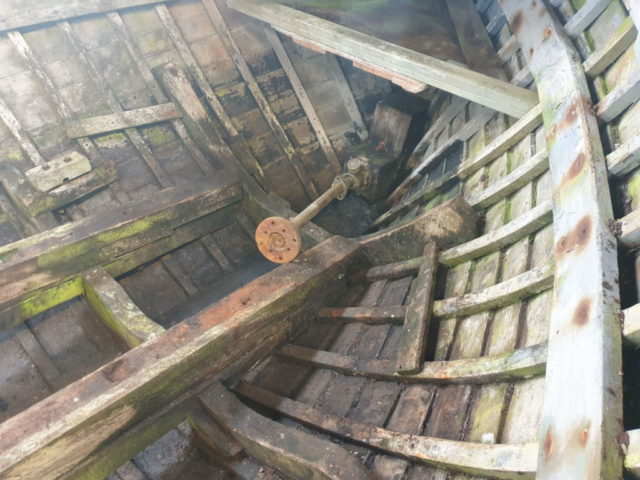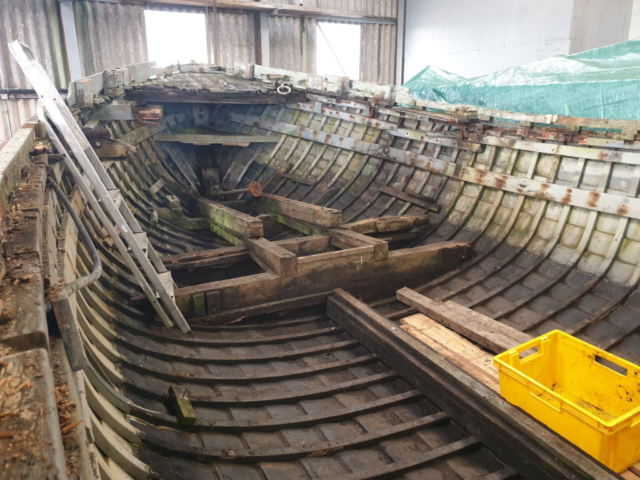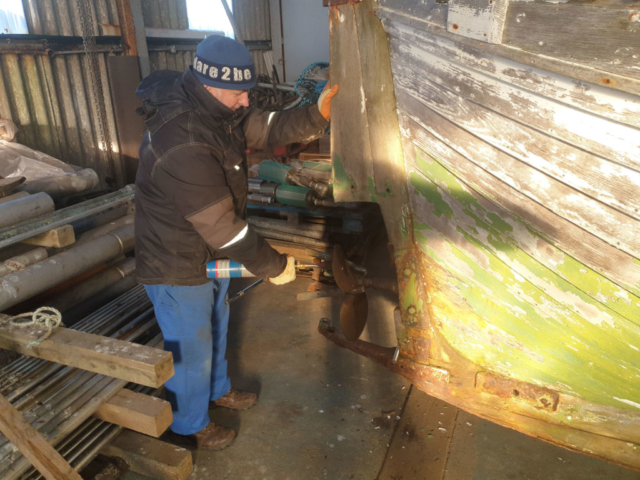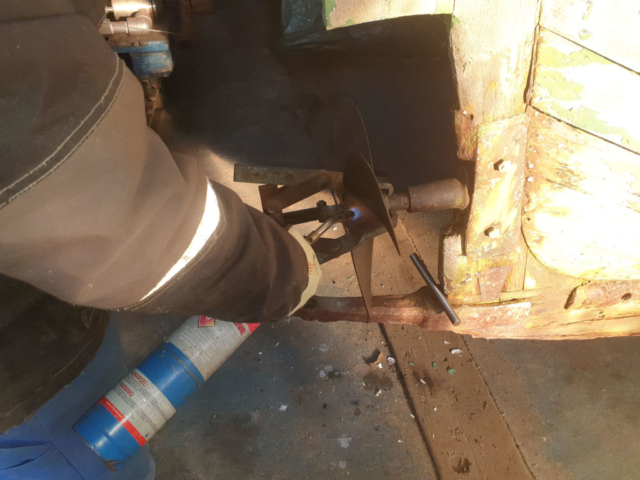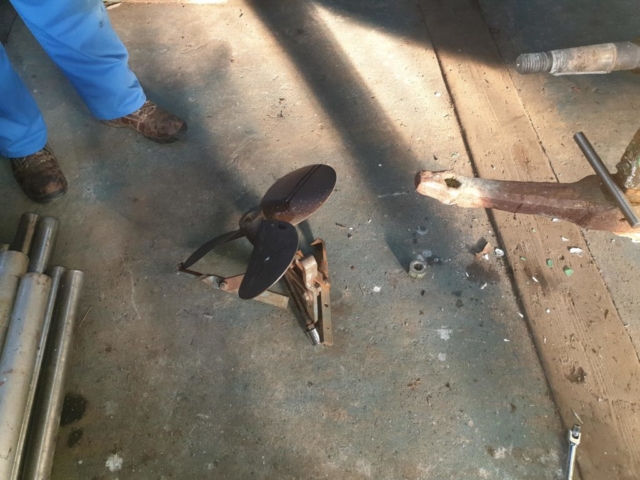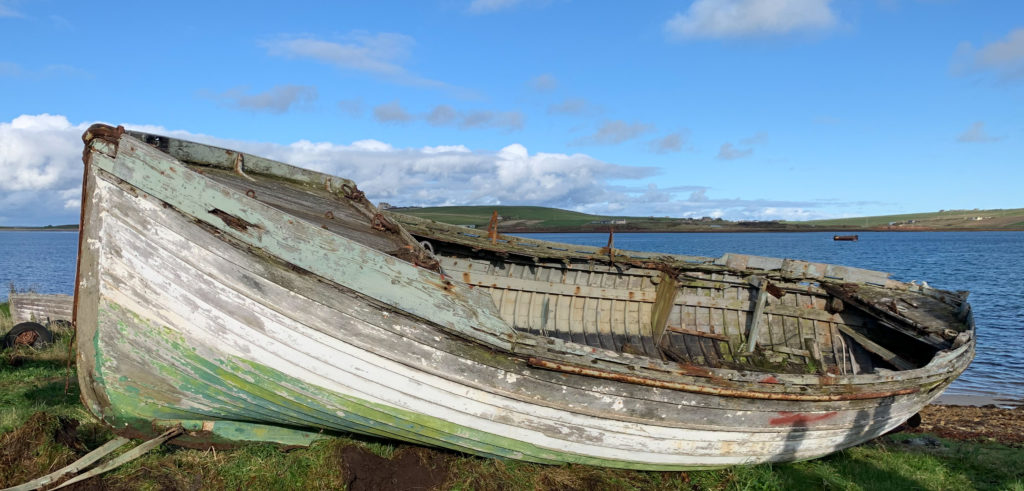
1930s clinker built, copper fastened ships lifeboat to the 11,019gt Norwegian Motor Tanker (M/T) Arne Kjøde which was herself built by Deutsche Werft AG, Betrieb Finkenwärder, Hamburg with Yard Number 199, delivered September 1938 and registered in Bergen.
This lifeboat was used in earnest when the Arne Kjøde was torpedoed by U-41 (Commander Kapitänleutnant Gustav-Adolf Mugler) north west of the Outer Hebrides on the 12 November 1939. Of the ship’s complement, 5 died and 35 survived. At the time of the sinking the Arne Kjøde was a ‘neutral’ vessel and unescorted. Arne Kjøde was the first Norwegian ship to be torpedoed without warning and sunk in WW2 (it was not the first Norwegian ship to be sunk in WW2 as several Norwegian ship had already sunk after hitting a German mine or being shelled).
The sinking of the Arne Kjøde was to be cited as an ‘atrocity’ during the post-war Nuremburg trial of Admiral Donitz, Norway having been a neutral country at the time of the sinking.
Arne Kjøde was the father of Jacob Kjøde (1880–1946) who founded the Jacob Kjøde A/S Shipping Company of Bergen in 1913. Jacob Kjøde A/S owned and operated the M/T Arne Kjøde.
The Arne Kjøde departed Aruba (Southern Caribbean) on the 27th October 1939 bound for Nyborg (Denmark) with a cargo of gasoil. The passage was uneventful until the 12th November when, NNW of the Outer Hebrides, the ship was hit by a torpedo, from a U-boat, which caused a mighty explosion. The crew all rushed to the lifeboat deck aft and begun to swing out the two lifeboats. The ship broke in two just aft of the midships bridge and the two sections floated away from each other.
The starboard lifeboat fell during the lowering process, flinging all the occupants into the water and injuring some of them. The port lifeboat was lowered successfully and rescued the crew in the water. Some of the crew transferred to the starboard lifeboat once it had been bailed and its contents rescued. The two lifeboats set off together with 23 men in the port boat, led by the First Officer, and 17 in the damaged starboard boat led by the Captain. The compass in the starboard boat had broken so the port boat took in tow and they began to sail southwards to reach land. The seas rose during the night as they headed towards Butt of Lewis lighthouse which they could now see to the east. In the early hours of the 13th November the tow broke and the boats drifted apart. By morning the two boats were no longer in sight of each other. The port boat re-raised its sail and continued to sail until they were picked up by the Grimsby trawler Night Hawk in the early hours of the 14th November and taken to Stornoway.
Meanwhile, the damaged starboard lifeboat, which needed constant bailing due to damage at the waterline, also raised its sail on the morning of the 13th November and attempted to sail towards land using the sun as a guide. However, the weather worsened so they lowered sail and lay to a drogue. During the morning of the 14th the boat, which was floating heavily due to a waterlogged air tank, was rolled by a large breaker. 10 of the crew managed to get on to the upturned hull, and when they righted the boat, they found two more crew alive under it. However, the captain and the steward drifted away, the injured galley-boy and the cook drowned, and another boatman was left unconscious and eventually died. The remaining crew attempted to hold the boat’s head up to the wind with the one oar remaining. In the afternoon of the same day they were spotted by an aircraft and then rescued by HMS Isis somewhere north of Cape Wrath. The aft section of Arne Kjøde was still drifting eastwards and was taken in tow by HMS Isis before the wind and sea rose too much so the tow had to be cut. HMS Isis fired at the aft section to sink it, and it caught fire immediately and did sink. HMS Isis then sailed to Scapa Flow where the 12 survivors were transferred to the hospital ship Greenwich.
After the rescue of the crew, local belief is that an attempt was made to sink our lifeboat by an armed British trawler. When the the lifeboat didn’t sink, the trawler towed it to Stroma. Once adjacent to the harbour the trawler blasted its horn, at 6.00 in the morning, until islanders came off on a boat and towed the swamped lifeboat ashore.
The Stroma men were initially going to break the lifeboat up and use the timber to build hen houses but James Rosie (a boat builder from Swona), across for a visit, said he could repair the damage and subsequently bought her. He repaired the damage and fitted an engine, cabin and seating, etc with the intention that she would be used as a backup for the Hood, the usual Swona ferry. As it turned out, due to difficulty securing a reliable engine, she was hardly ever used and has lain on the shore at Herston for many years.
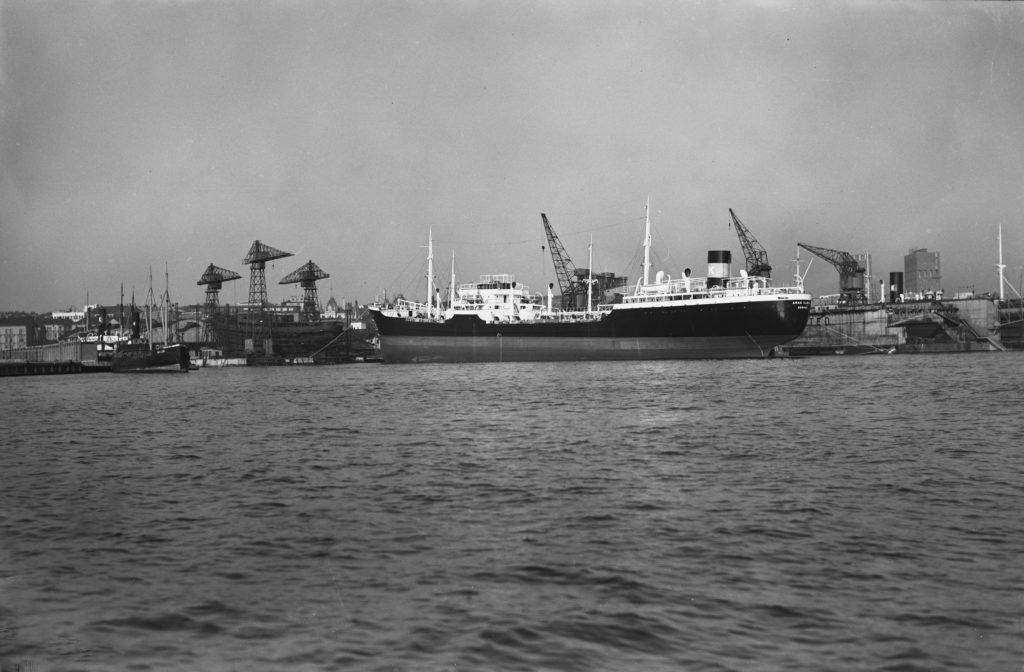
(Public Domain Image c/o National Library of Norway)
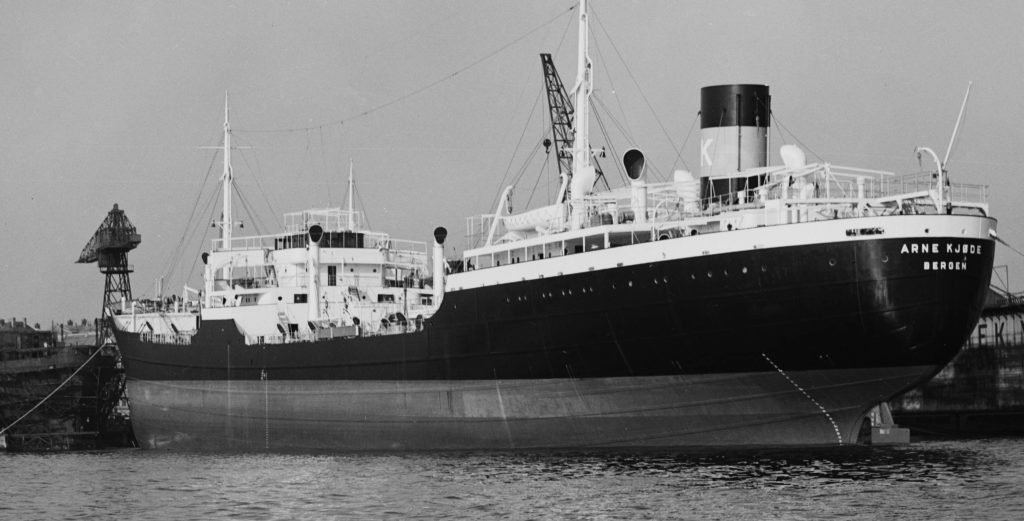
(Public Domain Image c/o National Library of Norway)
Norwegian memorial information on the lost crew members
Catalogue entry for M/T Arne Kjøde (cf The National Archives, Kew, London Ref: BT 389/33/243)
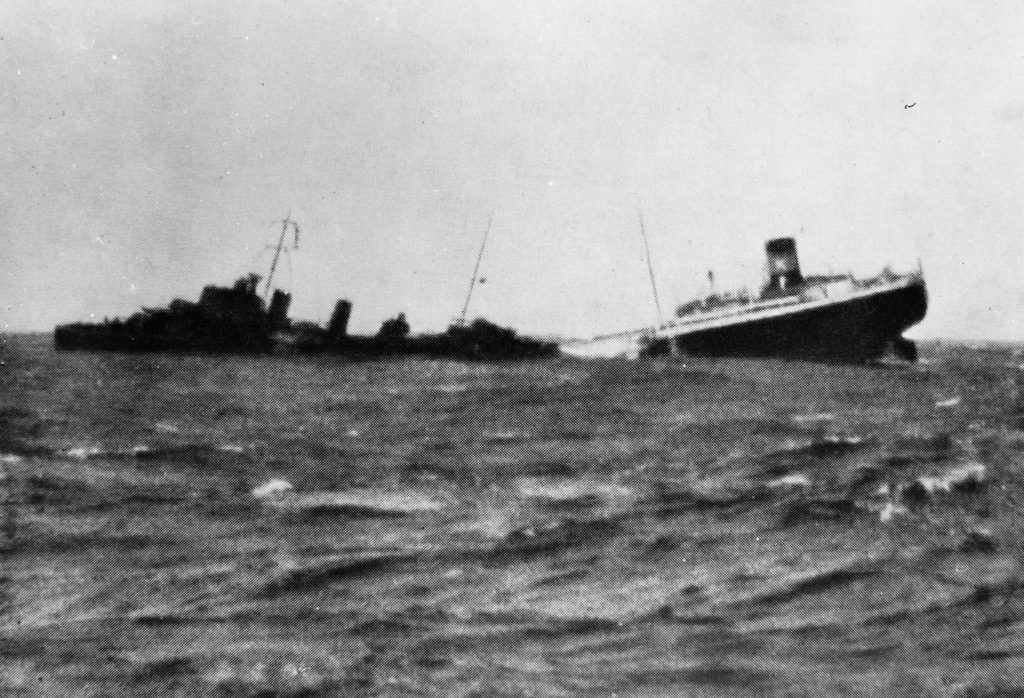
Extract from the Admiralty War Diary for 12 November 1939 (cf Royal Navy)
Royal Navy reports following the sinking of M/T Arne Kjøde (cf The National Archives, Kew, London Ref: ADM 199/141)
May 2019
Field trip to check on the condition of the boat which is still lying on the beach just above the high water line.
Sep 2019
Field trip to prepare the site and clean out bruk from the inside of the boat to allow an inspection of the keel and lower boards.
Oct 2019
Removed the cabin and surrounding decking. Removed the old fuel tanks and prepared the engine to be lifted out.
A return visit saw the old engine lifted out so as to reduce weight within the hull. we then dragged AKL (short for Arne Kjøde Lifeboat) up the slope so that we could get her lifted onto suitable road transport in future.
A short while later we managed to schedule a lift and move to covered storage in Stromness.
Bruck was removed from the interior of the hull to help even drying of the wood
This page contains public sector information licensed under the Open Government Licence v3.0.
